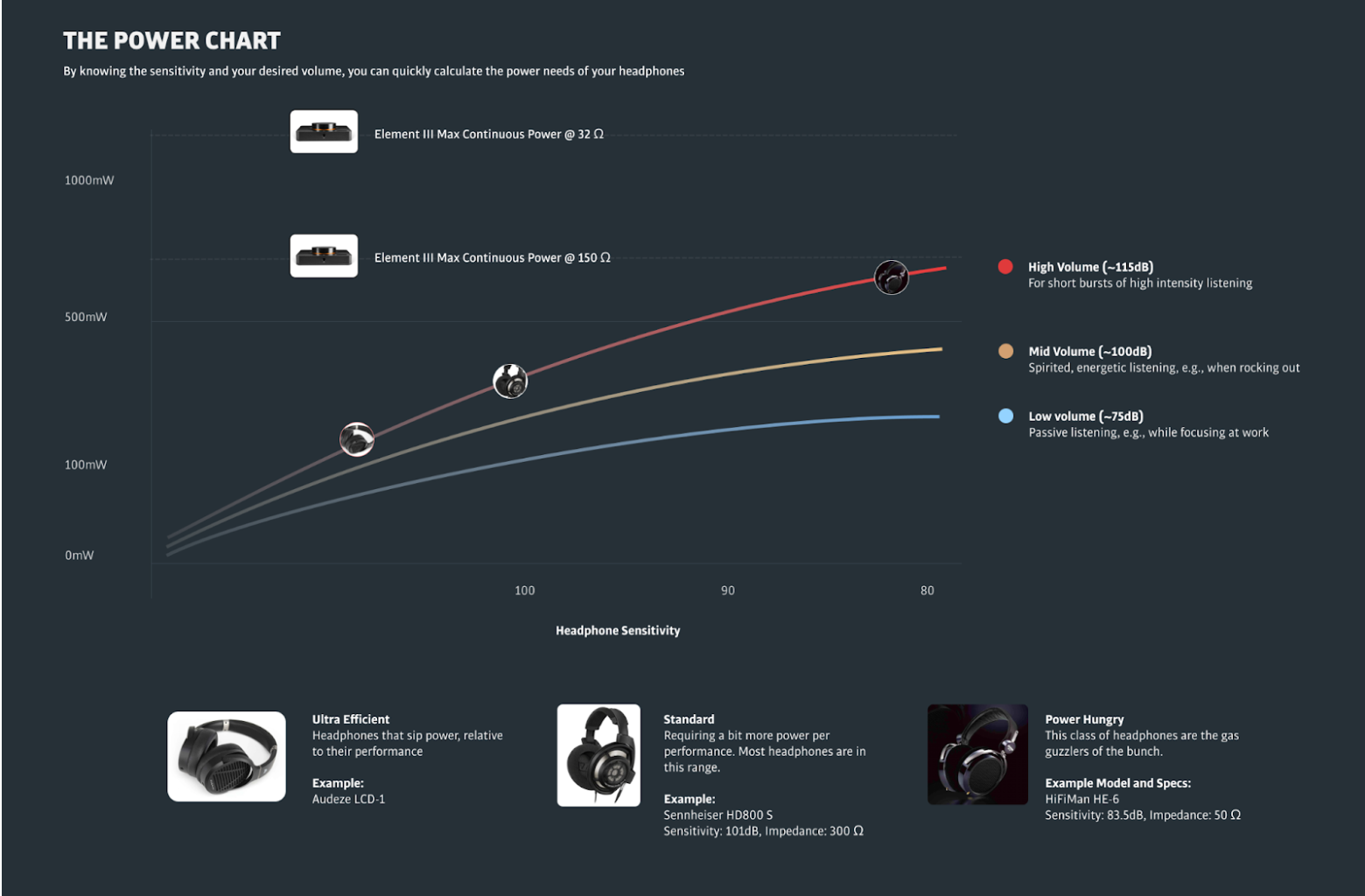Understanding Power
Key points:
- How loud you listen at determines how much power you need.
- Assuming an adequate source signal voltage, all JDS Labs amps are capable of powering 99.9% of headphones well beyond comfortable (and safe) listening levels.
- You can calculate the power needs of your headphone using an SPL chart, as long as you know your headphone's sensitivity and impedance.
- There is no performance penalty for using a JDS Labs headphone amp at or near its max power.
- Do not confuse Power and Gain! Louder audio is a byproduct of Gain, while Power ensures clarity at extreme volumes.
What is Power?
In audio terminology, power is the amount of energy an amplifier can deliver into a specific load (ohms), at a specific frequency (Hz), for a specific duration (seconds). A speaker or headphone of any kind needs only enough power to reach your desired listening volume, measured in decibles (dB). We find that listeners tend to define "very loud" at around 110 dB, with most enjoying music at well below this volume level.
Contrary to popular opinion, amps do not necessarily run more efficiently, perform better, or provide cleaner audio when used at a fraction of their peak power. Likewise, JDS Labs amps incur no more strain when operating at or near their volume limits.
Power is impacted by the source signal voltage, which is why we recommend pairing a JDS amp with a companion DAC. Doing so ensures that your amp and headphones will be able to reach peak volumes. For more information, see our section on Gain.
Why Power Matters
Most listeners will find that an audio level of 110-115 dB is sufficiently loud for nearly any listening scenario. Defining an upper level of listening volume allows us to chart the performance of our amps in relationship with various headphone brands and models, which all differ in their power consumption. All JDS Labs amps, from the Atom to the Element, deliver enough power to reach this upper threshold of on essentially all headphones.
Protect your hearing!
Even though our amps can power headphones to ear splitting volumes, research has consistently shown that listening for sustained periods at volumes over 85 dB can permanently damage your hearing. At 115 dB, just one minute of exposure can cause lasting effects. For more information, visit Hearingloss.org
Visualizing Headphone Power Needs with an SPL Chart
By using an SPL chart, you can determine the power requirements of your headphones at any volume. Power is charted on the vertical y-axis, while headphone sensitivity (efficiency) is charted on the x-axis. You can then refer to your amplifier's specifications to ensure that you have more than enough power for your headphones. For convenience, we've chosen three reference headphones, organized by their efficiency: ultra-efficient, standard, and power hungry.
Using the Atom Amp 2 as a reference, you can see how even at the highest volume these headphones fall comfortably within the capacity of the amp. To put this in additional context, at the highest volumes, an ultra-efficient IEM will use just 1% of the total power. The standard Sennheiser headphone will use 20%. The vast majority of headphones are more efficient, not less, than the Sennheiser.

Practical Considerations
For all current JDS Labs amplifiers, output power is not, and should not be a concern. Most issues regarding low volume can be traced to a weak audio source voltage.
For those concerned with headphones being damaged by an amp being too powerful, keep in mind that power is set by the volume at which you listen. You can only damage headphones when you intentionally turn the volume so high that the sound clips and distorts. Your ears will let you know when this point has been reached.

